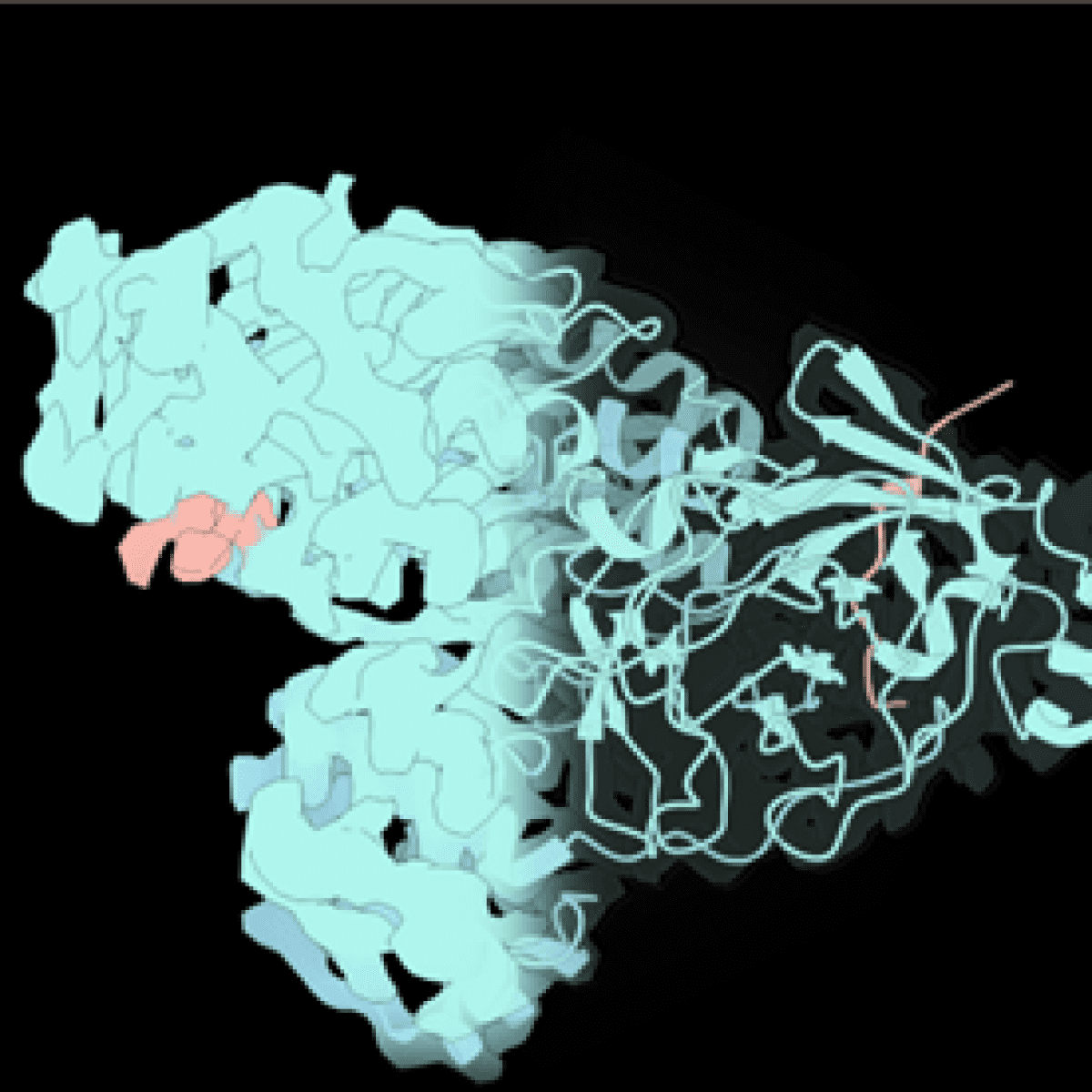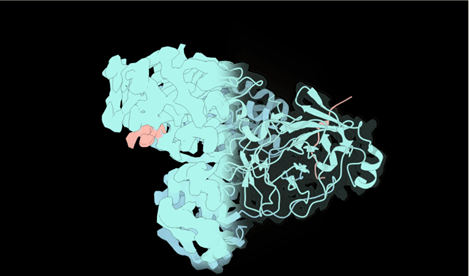
Researchers at USP in São Carlos combined cutting-edge technologies and demonstrated that a molecule targeted by medications behaves differently than previously theorized.
A group of researchers from the University of São Paulo in São Carlos has just presented their findings from research indicating a new understanding of the maturation process and how inhibitors act upon the Mpro protein, an essential component in the life cycle of the Sars-CoV-2 virus and the target of various efforts to develop medications to treat Covid-19. Their results appear in an article entitled “An in-solution snapshot of SARS-COV-2 main protease maturation process and inhibition,” published in the journal Nature Communications (https://doi.org/10.1038/s41467-023-37035-5).
Mpro is an abbreviation for main protease, because of its importance to the virus. Today, two medications are available which interact with this molecule to treat covid-19. Still, some of the processes in this protein’s activity are not yet entirely understood, and this was the object of the study undertaken at Sirius.
As part of the role it plays in the life cycle of the Sars-CoV-2 virus, Mpro undergoes a series of modifications until it reaches its final form. Part of this process had already been described by the group from São Carlos, directed by Professor Glaucius Oliva.
André Godoy, who led the group, was one of the first external users of Sirius, the cutting- synchrotron light source planned and built by the Brazilian Center for Research in Energy and Materials (CNPEM), an organization overseen by the Ministry of Science, Technology and Innovation (MCTI).
In September 2020 he brought approximately 200 crystals containing proteins from the Sars-CoV-2 virus for analysis in the Manacá beamline, which was developed for experiments involving X-ray diffraction crystallography. “The Manacá beamline was the first research station to open at Sirius, as the result of a task-force effort at the CNPEM to support research exploring molecular mechanisms related to covid-19. This is one of the publications that resulted from this effort,” explains Harry Westfahl, Director of the Brazilian Synchrotron Light National Laboratory (LNLS).
The results of this first project, published in a special edition of the Journal of Molecular Biology, already revealed important details of the maturation process for the main protease of the SARS-CoV-2 virus, which at that point was assumed to be a sequence of well-defined steps but was not yet entirely understood.
“During the first study, with the crystallography data obtained at Sirius we were able to visualize and understand the final three stages in the maturation of Mpro, which are required for this protein to attain its final form. But at that time we were not able to understand the first step in maturation, since it takes place very quickly,” explains Godoy, a researcher at USP.
Research on Mpro continued and expanded to include international collaboration and funding from the US National Institute of Health (NIH). This study also received support from the Brazilian Coordination for Development of Higher Education Personnel (CAPES), the São Paulo Research Foundation São Paulo (FAPESP), and Britain’s Wellcome Trust.
To understand the process that activates the protein, the researchers combined cutting-edge techniques like native mass spectrometry, which makes it possible to measure molecular weight and identify its components, electronic cryomicroscopy, which produces three-dimensional images of frozen molecules, and X-ray diffraction crystallography, which reveals structures at the atomic level.
Previous models to investigate Mpro assumed that N-terminal cleavage was required for this protean to achieve its dimer format, which is important for its activity in the viral life cycle. “We began this study thinking that this reaction would be the first step in maturation. The analyses conducted at Sirius using crystallography showed that the protein is able to reach its final stage of maturation even without N-terminal processing. The results were a surprise. We were also able to describe a small protein smaller than 70 kDa using cryomicroscopy, and describe its interaction with the N-terminal in solution,” explains Godoy.

Cryomicroscopy map of the Mpro dimer interacting with the N-terminal. Image obtained from analyses conducted at Diamond and Sirius by the USP São Carlos group
At Sirius, the researchers also analyzed interactions between Mpro and two different inhibitors, one of which is already used in medications to fight covid-19. Their findings demonstrate how these drugs function differently at the molecular level. The non-covalent inhibitor hinders protein dimerization, thus directly affecting maturation of the molecule and its activity; meanwhile, the covalent inhibitor induces conversion of monomers into dimers, even with intact N-terminals. “Explaining how the Mpro interacts with its inhibitors directly impacts how we develop drugs for covid-19, focusing on this protein,” emphasizes Gabriela Noske, a doctoral candidate at USP in São Carlos and the lead author of the article.
The USP group intends to continue using combined techniques for further study on other inhibitors for other viruses, considering the risk of new epidemics and pandemics in the future. They also are working to develop new inhibitors for SARS-COV-2 as part of the COVID Moonshot Consortium, a collaborative open science project started in March 2020 in order to develop a non-patented antiviral to combat the SARS-CoV-2 virus.
Sophisticated and effervescent environment for research and development, unique in Brazil and present in few scientific centers in the world, the Brazilian Center for Research in Energy and Materials (CNPEM) is a private non-profit organization, under the supervision of the Ministry of Science, Technology and Innovation (MCTI). The Center operates four National Laboratories and is the birthplace of the most complex project in Brazilian science – Sirius – one of the most advanced synchrotron light sources in the world. CNPEM brings together highly specialized multi-thematic teams, globally competitive laboratory infrastructures open to the scientific community, strategic lines of investigation, innovative projects in partnership with the productive sector and training of researchers and students. The Center is an environment driven by the search for solutions with impact in the areas of Health, Energy and Renewable Materials, Agro-environment, and Quantum Technologies. As of 2022, with the support of the Ministry of Education (MEC), CNPEM expanded its activities with the opening of the Ilum School of Science. The interdisciplinary higher course in Science, Technology and Innovation adopts innovative proposals with the aim of offering excellent, free, full-time training with immersion in the CNPEM research environment. Through the CNPEM 360 Platform, it is possible to explore, in a virtual and immersive way, the main environments and activities of the Center, visit: https://pages.cnpem.br/cnpem360/.
Paper published at Science Magazine investigates unexpected molecular interactions that affect cell function and could cause disease
Review article was highlighted in Chemical Reviews magazine